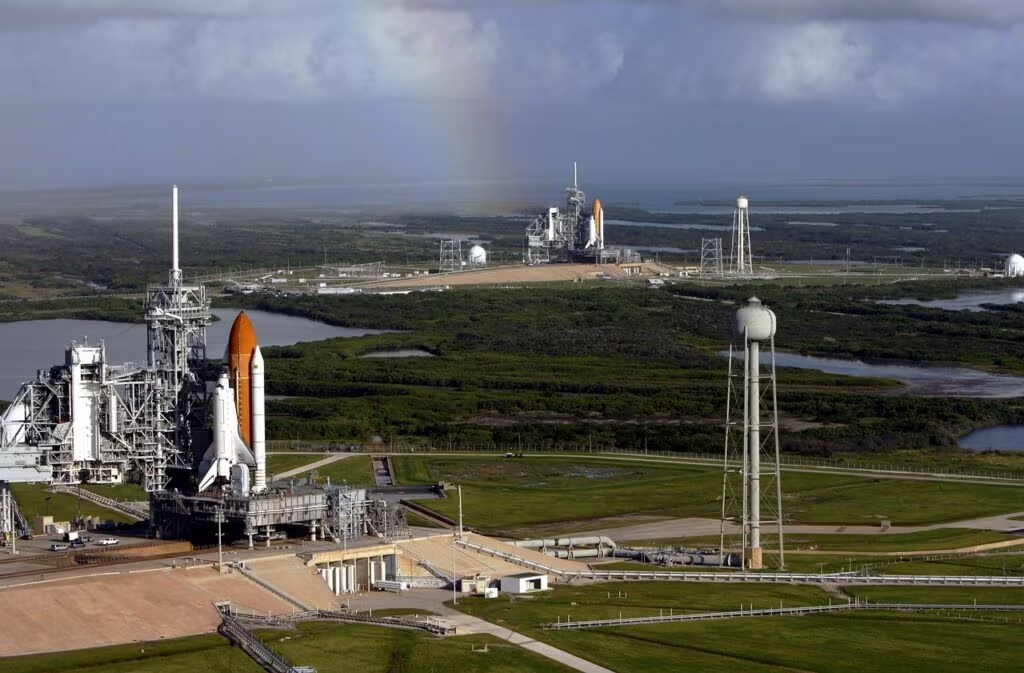Countdown to Launch: Starlink 10-3 Mission from LC-39A
SpaceX is set to execute its latest mission to expand the Starlink broadband constellation, launching 29 V2 Mini satellites aboard a veteran Falcon 9 rocket. This mission, designated Starlink 10-3, underscores the relentless pace of deployment required to build out the global satellite internet network.
The launch is scheduled for Thursday, November 7, 2025, from the historic Launch Complex 39A (LC-39A) at NASA’s Kennedy Space Center in Florida. The launch window is instantaneous, meaning the rocket must lift off precisely at the scheduled time of 8:20 p.m. EST (0120 UTC on November 8).
This mission is critical not only for adding capacity to the Starlink network but also for demonstrating the unparalleled reliability and rapid turnaround capability of the Falcon 9 fleet, utilizing a booster attempting its 17th flight.
Mission Profile: Starlink 10-3 and the V2 Mini Generation
The Payload: Next-Generation Starlink Satellites
The 29 satellites aboard this flight are part of the Starlink Gen 2 constellation, specifically the V2 Mini variant. These newer satellites are significantly larger and more capable than the initial V1.0 satellites, featuring enhanced throughput and the ability to utilize new frequency bands. Their deployment is crucial for increasing the bandwidth available to Starlink users globally and improving service reliability, particularly in densely populated areas.
The satellites will be deployed into a low-Earth orbit approximately 65 minutes after liftoff, following two burns of the Falcon 9’s upper stage.

Launch Logistics and Weather Outlook
Launch Complex 39A, originally built for the Apollo and Space Shuttle programs, remains a cornerstone of modern American spaceflight. The instantaneous launch window requires precise coordination, but the weather forecast for the Florida Space Coast is highly favorable.
Launch weather officers from the 45th Weather Squadron predict an 85% probability of favorable conditions at the scheduled launch time. The primary concerns, though minor, revolve around potential violations of the cumulus cloud rule and the associated electrical field rules.
The Veteran Booster: Falcon 9 B1077’s 17th Flight
This mission marks a major milestone in rocket reusability, utilizing the Falcon 9 first-stage booster designated B1077. This flight will be the 17th launch and landing attempt for this specific booster, further cementing SpaceX’s dominance in high-cadence space operations.
Booster B1077 has an impressive service record, having previously supported several high-profile missions, including:
- Crew-4 (carrying astronauts to the International Space Station)
- Crew-5 (another crew rotation mission)
- CRS-26 (Commercial Resupply Services to the ISS)
- Multiple previous Starlink deployment missions (including Starlink 4-33, 5-1, 5-3, 5-10, 6-1, 6-3, 6-4, 6-5, 6-12, 6-14, 6-21, and 6-27)
The Landing Attempt
Following stage separation approximately 2 minutes and 30 seconds into the flight, the B1077 booster will execute a series of complex maneuvers to return to Earth. Its target is the autonomous droneship, A Shortfall of Gravitas, stationed hundreds of miles downrange in the Atlantic Ocean.
Successful recovery of the booster is essential for maintaining SpaceX’s rapid launch cadence and minimizing operational costs. The ability of a single booster to fly 17 times demonstrates the robust engineering and reliability of the Falcon 9 system, pushing the boundaries of what was once considered possible in expendable rocketry.

The Broader Context: Starlink’s Role in Global Connectivity
The Starlink constellation is designed to provide high-speed, low-latency internet access to underserved regions globally. Each launch, like Starlink 10-3, incrementally increases the capacity and coverage area of the network. The shift to V2 Mini satellites is particularly significant because they allow for greater data throughput per satellite, helping the network manage the rapidly growing user base.
This mission is part of a larger trend of high-volume launches that have become standard for SpaceX in 2025. The company is leveraging its reusable architecture to deploy satellites faster than any competitor, maintaining a dominant position in the burgeoning low-Earth orbit communications market.
The Importance of High Cadence
Maintaining a high launch cadence—often several missions per month—is necessary for two primary reasons:
- Constellation Buildout: Rapid deployment allows Starlink to achieve global coverage and meet regulatory requirements for orbital slots.
- Satellite Replacement: Satellites in low-Earth orbit have a limited lifespan (typically five to seven years) and must be continually replaced to maintain the integrity and performance of the network.
Key Takeaways for the Starlink 10-3 Mission
This launch is significant for several reasons, reinforcing SpaceX’s operational capabilities and the expansion of the Starlink network:
- Mission Goal: Deploy 29 Starlink V2 Mini satellites to enhance network capacity.
- Launch Time: Scheduled for 8:20 p.m. EST on November 7, 2025, from LC-39A.
- Booster Milestone: Falcon 9 booster B1077 attempts its 17th flight and landing, a testament to rocket reusability.
- Recovery: The booster will land on the droneship A Shortfall of Gravitas.
- Weather: Favorable conditions with an 85% chance of launch.

What’s Next
Following the successful deployment of the Starlink 10-3 satellites, SpaceX will continue its aggressive launch schedule. The rapid reuse of the Falcon 9 fleet ensures that the next Starlink mission will be ready to fly within days, maintaining the momentum needed to complete the Gen 2 constellation. Observers will be watching the post-flight inspection of B1077 closely, as the performance of high-cycle boosters provides crucial data for future reusable launch systems, including the Starship program.
Originally published: November 7, 2025
Editorial note: Our team reviewed and enhanced this coverage with AI-assisted tools and human editing to add helpful context while preserving verified facts and quotations from the original source.
We encourage you to consult the publisher above for the complete report and to reach out if you spot inaccuracies or compliance concerns.

